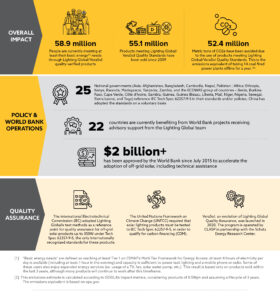Since we kicked-off our first pilot program in Kenya in 2009, the Lighting Global program has been at the forefront of the drive to expand access to modern solar energy services to people living without access to electricity around the globe. Through our activities, including quality assurance work, market development, and policy advisory services, we have helped to enable off-grid energy access to tens of millions of people, reduced GHG emissions, and informed World Bank lending and government policies.
Overall Impact


